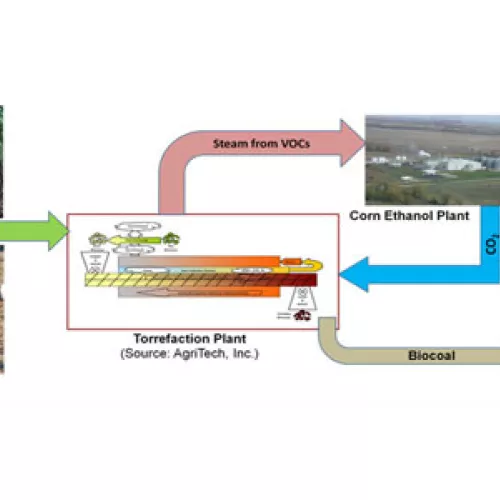Douglas Tiffany, assistant extension professor at the University of Minnesota, discussed the economics of co-locating torrefaction, ethanol and coal power plants at the University of North Dakota on Nov. 6.
“What we wanted to get an idea of was what would be the rates of return on equity for torrefaction plants and how that use of biocoal could help coal-fired power plants comply with new regulations that are hanging over their head at this time,” Tiffany said.
After the cost of biomass, an independent torrefaction plant may face a production cost of $42 per finished ton, Tiffany explained. However, if the plant was able to sell a certain amount of steam and gases, the cost would be estimated at $17 per ton. “A co-located torrefaction plant where it has an opportunity to sell those gases would be enjoying 16 percent rates of return on equity versus six percent without that [opportunity],” Tiffany continued.
Tiffany’s economic model first portrayed smaller coal-fired power plants ranging from 150 to 500 megawatts, and co-located them with both a torrefaction and ethanol facility. By using a 10 percent blend of biocoal, a power plant could see an 8.5 percent reduction of greenhouse gases in terms of grams per megajoule. Greater blends demonstrated even larger reductions of greenhouse gas (GHG) emissions. For instance, a 30 percent blend estimated a 25.6 percent reduction of GHG emissions. He also estimated a torrefaction plant that process 150,000 tons of corn stover or woody biomass per year could supply 42 percent of the needed process heat to a co-located ethanol plant.
Torrefaction economics favor the use of dry biomass so more energy from the volatiles can be put to better use, Tiffany concluded. Coal prices of more than $100 per ton and high fees for carbon dioxide emissions would favor the adoption of torrefaction technology, he added, noting that biocoal has more favorable attributes for integration with coal infrastructure.
Click here to see the original story from the Biomass Magazine >>


